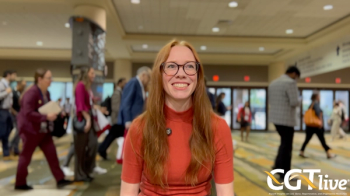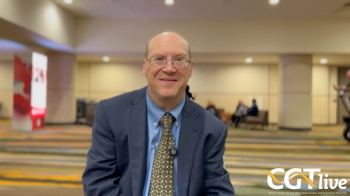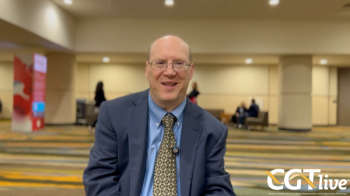
FDA Approves Nivolumab for Head and Neck Cancer
The FDA has approved nivolumab for patients with metastatic or recurrent squamous cell carcinoma of the head and neck following progression on platinum-based therapy.
The FDA has approved nivolumab (Opdivo) for patients with metastatic or recurrent squamous cell carcinoma of the head and neck (SCCHN) following progression on platinum-based therapy.
The approval is based on the CheckMate-141 study, in which the median overall survival (OS) with nivolumab was 7.5 months compared with 5.1 months with investigator's choice (HR, 0.70; 95% CI, 0.52-0.92; P = .0101). The objective response rate (ORR) was 13.3% with nivolumab and 5.8% for investigator's choice.
“Squamous cell carcinoma of the head and neck that progresses on or after platinum-based therapy is a debilitating and hard-to-treat disease associated with a very poor prognosis,” CheckMate-141 investigator Maura Gillison, MD, PhD, Jeg Coughlin Chair of Cancer Research, The Ohio State University Wexner Medical Center, said in a statement. “This latest approval for Opdivo reinforces the potential to provide patients with improved overall survival, considered the gold standard in cancer care.”
In the trial, 361 patients with cancer of the oral cavity, pharynx, or larynx were randomized in a 2:1 ratio to receive nivolumab (n = 240) or investigator's choice of cetuximab (12.4%), methotrexate (44.6%), or docetaxel (43%; N = 121). Nivolumab was administered intravenously at 3 mg/kg every 2 weeks. Cetuximab was administered at 400 mg/m2 for the first dose followed by 250 mg/m2 weekly. Methotrexate was administered at 40 mg/m2 weekly. Docetaxel was administered at 30 mg/m2 weekly.
The median age of patients in the trial was 60 years, and 31.3% were ≥65 years of age. The majority of patients were male (83%), Caucasian (83%), and had an ECOG PS of 1 (78.4%). Most patients (54.8%) received ≥2 prior systemic therapies, and over 90% had received prior radiation therapy. HPV status was known for 49.3% of patients, using p16 status, and PD-L1 expression was available for 72% of enrolled patients.
The 1-year OS rates were 36% with nivolumab (95% CI, 28.5-43.4) compared with 16.6% for investigator’s choice (95% CI, 8.6-26.8). Similar improvements in survival were seen across demographic subgroups. The ORR in the nivolumab arm consisted of 6 complete responses (2.5%) and the stable disease (SD) rate was 22.9%. In the investigator's choice arm, 1 patient had a complete response and the SD rate was 35.5%.
The median progression-free survival (PFS) was 2 months with nivolumab versus 2.3 months with investigator's choice (HR, 0.89; 95% CI, 0.70-1.10; P = .3236). The 6-year PFS rates were 19.7% for nivolumab and 9.9% for investigator's choice of therapy.
Further analyses revealed distinct populations of patients who responded better to nivolumab monotherapy versus investigator's choice, specifically those with PD-L1—positive and HPV-positive SCCHN. Those with PD-L1 expression on ≥1% of cells experienced a median OS of 8.7 months with nivolumab compared with 4.6 months in the control arm (HR, 0.55; 95% CI, 0.36-0.83). In the HPV-positive group, the median OS was 9.1 months with nivolumab compared with 4.4 months with investigator’s choice (HR, 0.56; 95% CI, 0.32-0.99).
Those who tested negative for PD-L1 had a median OS of 5.7 months with nivolumab versus 5.8 months in the control arm (HR, 0.89; 95% CI, 0.54-1.45). In the HPV-negative arm, the median OS with nivolumab was 7.5 versus 5.8 months (HR, 0.73; 95% CI, 0.42-1.25).
Adverse events (AEs) were significantly less with nivolumab versus investigator's choice. There were 2 treatment-related deaths in the nivolumab arm related to pneumonitis and hypercalcemia. In the investigator's choice arm, there was 1 death related to lung infection.
Overall, grade 3/4 events were experienced by 13.1% of patients treated with nivolumab versus 35.1% for investigator’s choice. All-grade AEs were experienced by 58.9% of patients treated with nivolumab compared with 77.5% with investigator's choice. The most common grade 3/4 AEs with nivolumab were fatigue (2.1%), anemia (1.3%), and asthenia (0.4%). For investigator's choice, the most common grade 3/4 AEs were anemia (4.5%), alopecia (2.7%), fatigue (2.7%), diarrhea (1.8%), asthenia (1.8%), and mucosal inflammation (1.8%).
In April 2016, nivolumab was granted a breakthrough therapy designation as a treatment for patients with SCCHN. This designation was also based on findings from the CheckMate-141 study, which was stopped early in January 2016 after showing an improvement in OS.
Since its initial approval for patients with melanoma in 2014, nivolumab has received numerous additional indications. The agent is approved for patients with non—small cell lung cancer, renal cell carcinoma, and classical Hodgkin lymphoma, as well as for patients with melanoma as a single-agent and with the CTLA-4 inhibitor ipilimumab (Yervoy).
Ferris RL, Blumenschein GR, Fayette J, et al. Further evaluations of nivolumab (nivo) versus investigator’s choice (IC) chemotherapy for recurrent or metastatic (R/M) squamous cell carcinoma of the head and neck (SCCHN): CheckMate 141. J Clin Oncol. 2016;34 (suppl; abstr 6009).
Newsletter
Stay at the forefront of cutting-edge science with CGT—your direct line to expert insights, breakthrough data, and real-time coverage of the latest advancements in cell and gene therapy.
















































